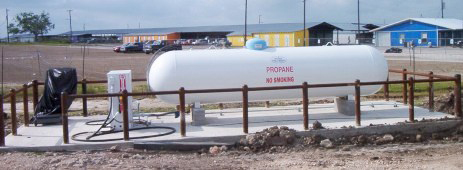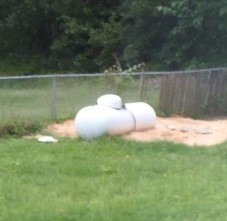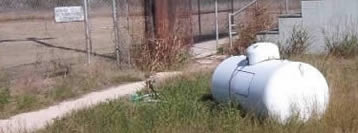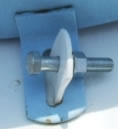
Propane Tank Protection - Preventing Tank Damage
Propane tanks are subject to protection requirements for obvious reasons. Propane tanks that are "subject to vehicular traffic" as the rules state, clearly should be protected from any sort of impact caused by a vehicle. Propane tanks subject to tampering of any kind should also be protected from such activity. The installation location of propane tanks factors into their inherent protection but additional protection is sometimes needed. LP Gas container protection discussed here should give users a better idea of the reasoning behind propane tank protection requirements.
Propane Tank Protection From Vehicular Traffic

Propane tanks that are installed where automobile traffic can be expected or is present should be protected from potential impact. Unlike tampering or accidental jarring of the line or tank by people, a slight bump by a car can be much more damaging. Although the propane tank will not likely be damaged, the movement of the tank can be much more significant resulting in a stronger and more drastic movement of the service line. If the force of the vehicle impact is too severe, the gas service line can be subject to large leaks or even total breakage. The gas line itself, if hit directly can be severely damaged which may result in larger and more critical leaks requiring the tank service valve to be closed until repairs can be made.
Tank Surface Protection

The tank itself is subject to the elements, not only from weather elements and the sun, but also from elements below the tank itself. While maintaining a tank and its connections and valves, it's also important to understand that preserving the container itself is viable for the life of the tank. And as such, keeping the tank surface clean and painted a reflective color is paramount for protection from the hot summer sun and cold winters.
Additionally, and more importantly, protecting the integrity of the tank from ground elements is crucial. Tanks that are installed are to be elevated on a fireproof pad or approved blocks such as concrete. and must not come in contact with dirt or soil, as seen here. There are two reasons for this:
- Moisture - Dirt and soil will hold moisture which causes rust and can lead to the tank steel being comprimised, which can possibly result in a pinhole leak. In tropical climates, this is more of an issue than in an arid environment.
- Electrolysis - The earth has electric conductivity, which occurs naturally. This current can act as a drill and can actually create a hole in a steel surface, such as a tank. Note that underground propane tanks are designed for, and installed in such a manner that the problem of electrolysis is mitigated.
Tank Protection From Tampering

The subject of tampering with propane tanks is not something that is commonly addressed but it does warrant attention. The primary concern is the service line and its susceptibility to jarring that may result in gas leaks at the connections along the line. Tampering with unprotected propane tanks is a concerning factor where groups of people gather, such as a school yard or athletic field. Tampering is usually not a problem regarding residential propane tanks but as a precaution, children should be told that the family propane tank is not something to play on or around. The picture here shows a propane tank located at a baseball field that is unprotected and subject to tampering. A propane tank such as this is illegal and should be protected from the public by enclosing the tank with perimeter fencing.
Propane Tank Domes - Protecting Tank Valves and Fittings

The propane tank dome is the first line of defense against damage that can be caused to the tank fittings installed directly under the dome. Additionally, the dome provides protection for the regulator and its vent. Propane tank domes are part of a propane tank and are included when delivered by the manufacturer and should always be present when installed by a propane company. Without a securely attached and closed propane tank dome, tank fittings are subject to damage and possible breakage by falling debris, heavy materials, or large tree limbs. The propane tank dome is an integral part of a propane tank's overall protection and usability.
